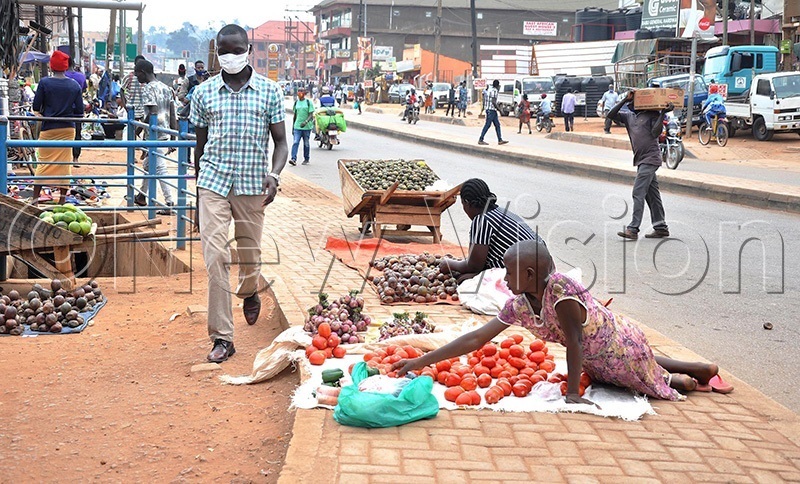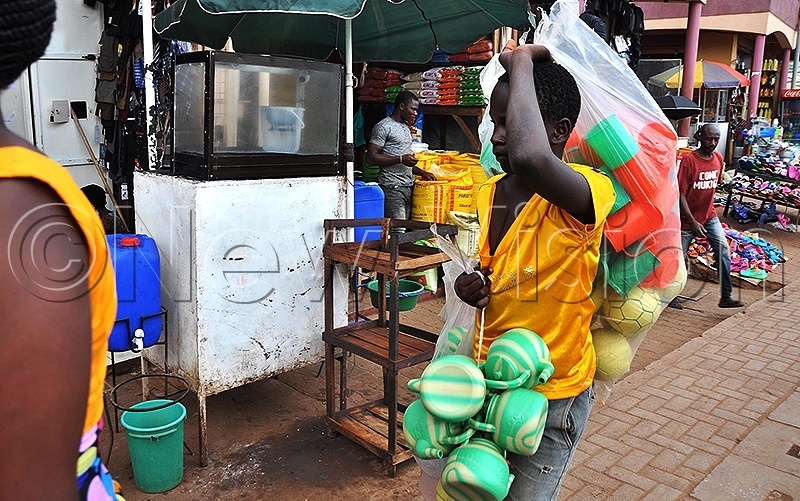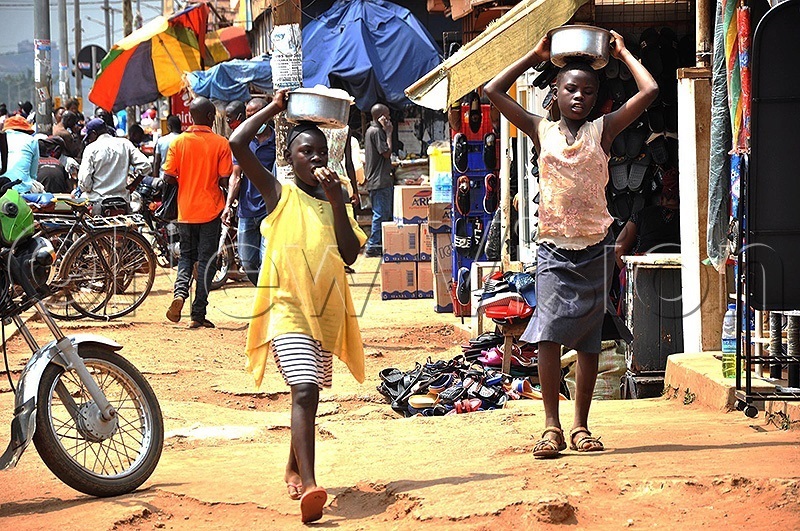COVID-19: Children forced into child labour
According to a new brief from the International Labour Organization (ILO) and UNICEF, millions of children risk being pushed into child labour as a result of the COVID-19 crisis.
CHILD LABOUR CHILDREN'S RIGHTS
To Jane, 16, a resident of Bwologoma village in Bugiri district, life during the COVID-19 pandemic is tough.
Jane lives with her grandmother. Her life flipped upside down when schools closed due to the coronavirus pandemic.
Her grandmother could no longer afford much which forced her to go digging in people's gardens to get money for food for her and her grandmother.
"It's hard to meet basic needs in these times. During school time, my grandmother would pay for my lunch at school but now we have to toil to get food for home," she says.
Jane has to engage in commercial businesses like digging for people, fetching water and of recent hawking pancakes in the trading centre every evening.
Jane is one of those children in Uganda who have turned into labourers to fend for their families and are exposed to the dangers of COVID-19 that has ravaged the country, let alone the world.
She says men have since pestered her for sexual favours when returning from selling pancakes and threatened to rape her if she does not oblige to their advances. Thank God, nothing has happened to her.

In Busia district, Francis, 13, living with his mother says since the lockdown, his mother has been sending him to sell merchandises in town. His main customers are truck drivers.
Though he knows the dangers of coming in close contact with the truck driver, he revealed that there is no option lest risk being flogged by his mother's if he went home with no money. "She even refuses to give me food," he said.
In Busia, the authorities noted that because of the lockdown, many children are now working in goldmines some with their parents while others on their own which put them at risk.
According to a new brief from the International Labour Organization (ILO) and UNICEF, millions of children risk being pushed into child labour as a result of the COVID-19 crisis. This could lead to the first rise in child labour.
The Uganda Bureau of Statistics (UBOS) indicates that 45% of children from households living below the poverty line are forced out of school to work and supplement their parents' incomes, with children aged between 5 and 17 years the worst at risk.

Across the globe, children are being forced, either by circumstance or coercion, to undertake work that damages them psychologically and physically and deprives them of their childhood.
What is fuelling child labour?
Kizza Martin, Executive director of National Children's Authority in Uganda says children constitute 56% of the population and yet are invisible in critical structures that affect their lives.
According to Kizza, people losing jobs and others having restrictions to do certain jobs as a result of COVID-19 has led to a rise in poverty hence fuelling cases of child labour as households use every available means to survive.
"The closure of schools has rendered children idle hence giving room for some people to force children into the workforce," he said. Schools closure is currently affecting more than 1 billion learners in over 130 countries and over 15 million in Uganda.

Also, during one of the Children's virtual Conference on COVID 19 impact on children under the theme "HEAR MY VOICE TOO "organised recently by Somero Uganda and National Children's Authority with support from Terre des Hommes, Girls Advocacy Alliance, Rain forest Alliance and International Labour organization, children revealed that child labour has become worse.
Most children said since they are not in school and parents are not working yet they still have to feed and meet their family's needs, parents are forcing them to work.
Some children reported that they had parents arrested in this pandemic because of defying the guidelines hence they are living at the mercy of engaging in all sorts of work provided it puts food on the table
Children revealed that they have become mobile markets, moving from house to house, village to village carrying baskets of foodstuffs, vegetables among other moveable items
Some children said they were engaged in stone quarrying, gold mining, working on rice and sugar plantations, smuggling of goods and prostitution, especially at the border districts.
Effects of child labour
Geoffrey Nsubuga, Executive Director for Somero Uganda says many children who are involved in child labour are working longer hours or in horrible conditions which could cause significant harm to their health and safety.
According to Nsubuga, unlike activities that help a child to develop, such as contributing to housework for a few hours a week or taking on a job during school holidays, child labour interferes with schooling and is harmful to a child's physical, mental, social and moral development.

"Children who are into child labour are faced with acute risks of hazardous and exploitative work, including the worst forms of child labour," he said.
Nsubuga added that gender inequalities are likely to increase with girls particularly vulnerable to exploitation in agriculture and domestic work.
"Even when schools open, there is a risk of some parents forcing their children to continue because they might not be able to afford to send their children to school. Even children who are exposed to money might see it as not necessary to go back to school," he said.
With COVID-19, many children are exposed to many forms of risks including sexual violence, child labour, child marriage, child trafficking and psychosocial distress, among others.
He revealed that services such as vaccinations, schooling, and home visiting social protection initiatives have been interrupted hence in future the children will bear long-lasting effects.
What needs to be done
The Constitution of Uganda, 1995, Chapter I, Article 34 (4), provides for the protection of a child from hazardous and exploitative work.
The Constitution also clearly spells out that children are entitled to be protected from social and economic exploitation and should not be employed in or required to perform work that is likely to be hazardous or to interfere in their education, or to be harmful to their health or physical, mental and spiritual, moral or social development.
Frank Mugabi, Communications Officer, for Ministry of Gender, Labour and Social Development says the struggle against child labour needs extraordinary momentum to address the problem and create a safe environment for children to join the fight against any form of exploitation.
He added that there is also a need to join forces with private sectors, both formal and informal sectors to influence them to join the struggle against child labour. Mugabi emphasised that anyone who forces children into child labour is supposed to be punished as the law stipulates.
"All local leaders and probation officers should ensure that they enforce the laws relevant to children such that they are protected against all forms of child labour especially in this season of COVID," he said.
There is need to put a child Labour focal person on the COVID-19 taskforce, we have heard about this great team, therefore, we request the Government to put a person is in charge of children issues in all districts if possible, at the community level.
Children should be empowered with enough information and the right information so that they can rightfully fight for their right.